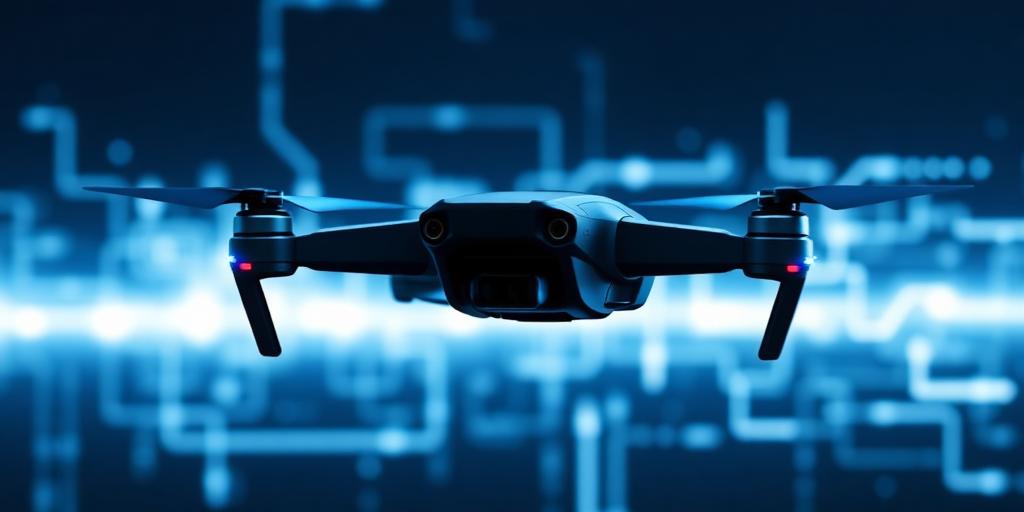The world of unmanned aerial vehicles, more commonly known as drones, is in a state of continuous, rapid evolution. Far from being mere remote-controlled toys, today's drones are sophisticated aerial robotics platforms, pushing the boundaries of what's possible across a multitude of industries. This deep dive into the latest drone innovations reveals a landscape rich with advanced capabilities, ushering in a new era of efficiency, data collection, and operational versatility.
The Dawn of True Autonomy and AI Integration
Perhaps the most significant leap in modern drone technology is the integration of advanced Artificial Intelligence (AI) and machine learning. Current-generation drones are no longer simply following pre-programmed flight paths; they are capable of real-time decision-making, dynamic obstacle avoidance, and intelligent object recognition. This shift enables truly autonomous drone systems that can navigate complex environments, identify anomalies, and even adapt to changing conditions without constant human intervention. From inspecting critical infrastructure to surveying vast agricultural fields, these advanced drone features significantly reduce human error and increase operational safety and precision. The ability for drones to learn from their surroundings and optimize their flight patterns marks a pivotal moment in their development.
Powering Progress: Battery Life and Propulsion Innovations
One of the historical limitations of drone operations has been battery life. However, recent advancements in battery chemistry, energy management systems, and propulsion efficiency are dramatically extending flight times and operational ranges. Breakthroughs include higher energy density lithium-ion batteries, as well as the exploration of hybrid power systems incorporating small internal combustion engines or even solar panels for prolonged endurance. These innovations are crucial for applications requiring extensive aerial coverage, such as long-distance deliveries or continuous environmental monitoring, making the future of drone applications more feasible and widespread. Furthermore, quieter and more efficient motor designs are making drones less intrusive and more adaptable for sensitive operations.
Miniaturization and Enhanced Sensor Capabilities
The trend towards miniaturization continues to redefine drone design, allowing for smaller, lighter, and more agile units without sacrificing performance. Simultaneously, the quality and diversity of onboard sensors have skyrocketed. High-resolution cameras, thermal imaging, LiDAR (Light Detection and Ranging), and multispectral sensors are now commonplace, providing unprecedented levels of data capture. This cutting-edge drone design allows for highly detailed mapping, precise volumetric calculations, early detection of crop diseases, and comprehensive structural integrity assessments. The ability to collect and process such rich data sets in real-time transforms industries reliant on precise visual and environmental information.
Expanding Horizons: Diverse Applications and Regulatory Landscapes
What was once largely a niche for hobbyists and military applications has blossomed into a ubiquitous tool across various sectors. The latest drone technology is now integral to:
- Logistics and Delivery: Paving the way for rapid, autonomous package delivery in urban and remote areas.
- Agriculture: Optimizing crop health, irrigation, and pest control through precision farming.
- Infrastructure Inspection: Safely assessing bridges, power lines, and wind turbines, often in hazardous conditions.
- Public Safety: Aiding search and rescue missions, disaster response, and law enforcement surveillance.
- Entertainment and Media: Revolutionizing aerial cinematography and live event coverage.
As these capabilities expand, so does the imperative for robust regulatory frameworks. Governments and aviation authorities worldwide are actively developing policies to ensure safe and responsible drone integration into national airspace, balancing innovation with public safety and privacy concerns. This evolving regulatory landscape is key to unlocking the full potential of these aerial platforms.
The Road Ahead: Seamless Integration and Hyper-Connectivity
The trajectory of drone technology points towards increasingly seamless integration into daily life and industrial operations. Expect further advancements in swarm intelligence, enabling multiple drones to coordinate complex tasks autonomously. The advent of 5G and future wireless technologies will facilitate faster, more reliable data transmission, enabling real-time command and control over vast distances. Ultimately, the "greatest" in drone technology isn't just about individual features; it's about the synergistic effect of these innovations creating a powerful, versatile, and transformative tool for the 21st century.




